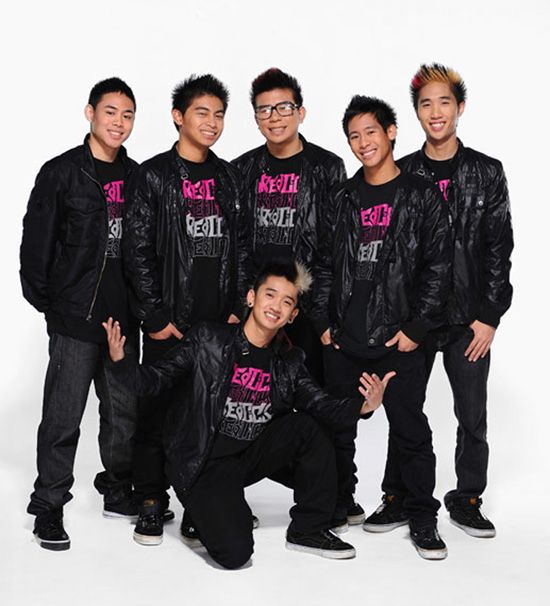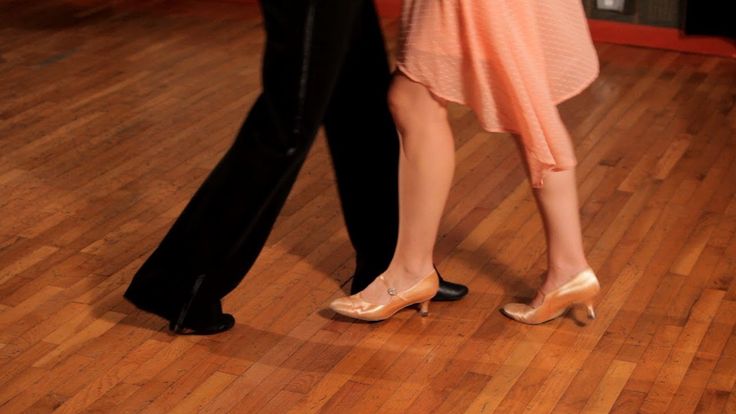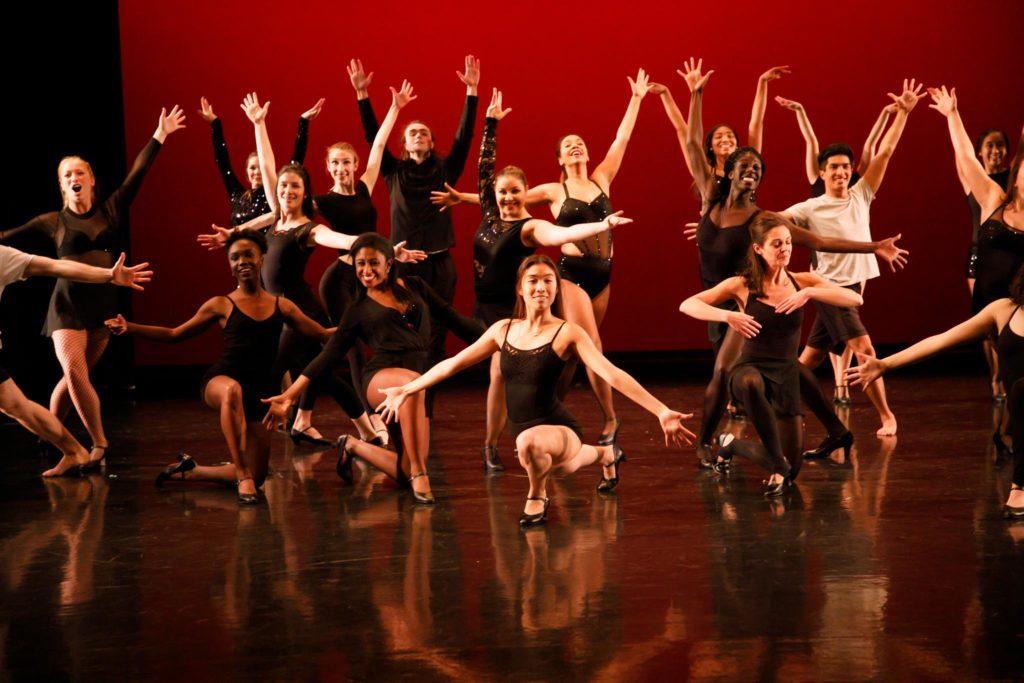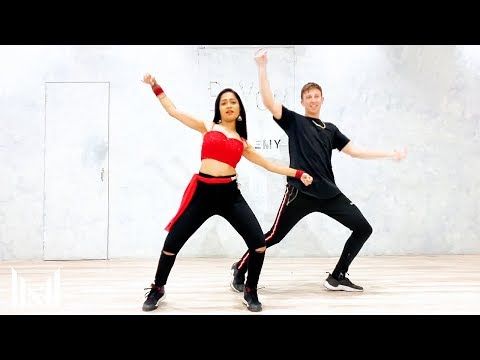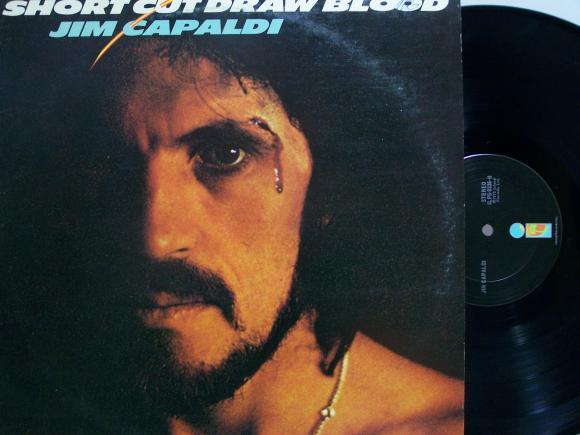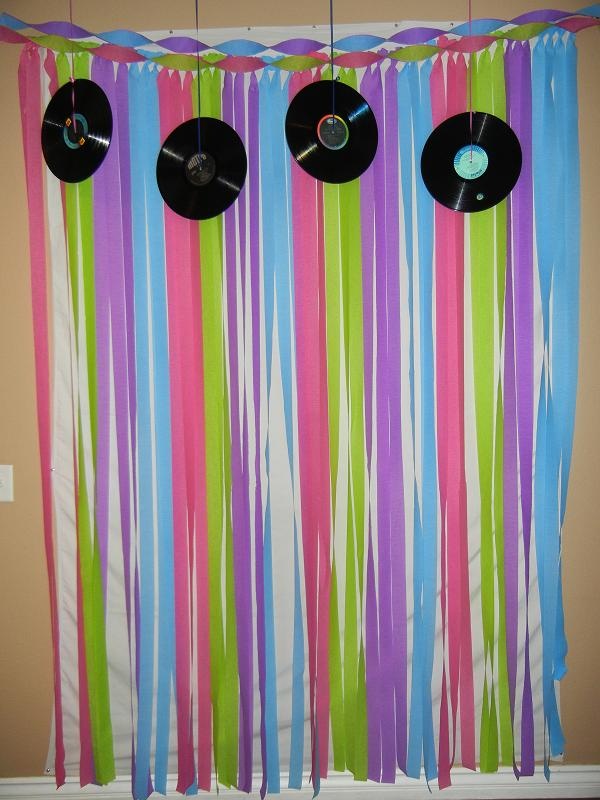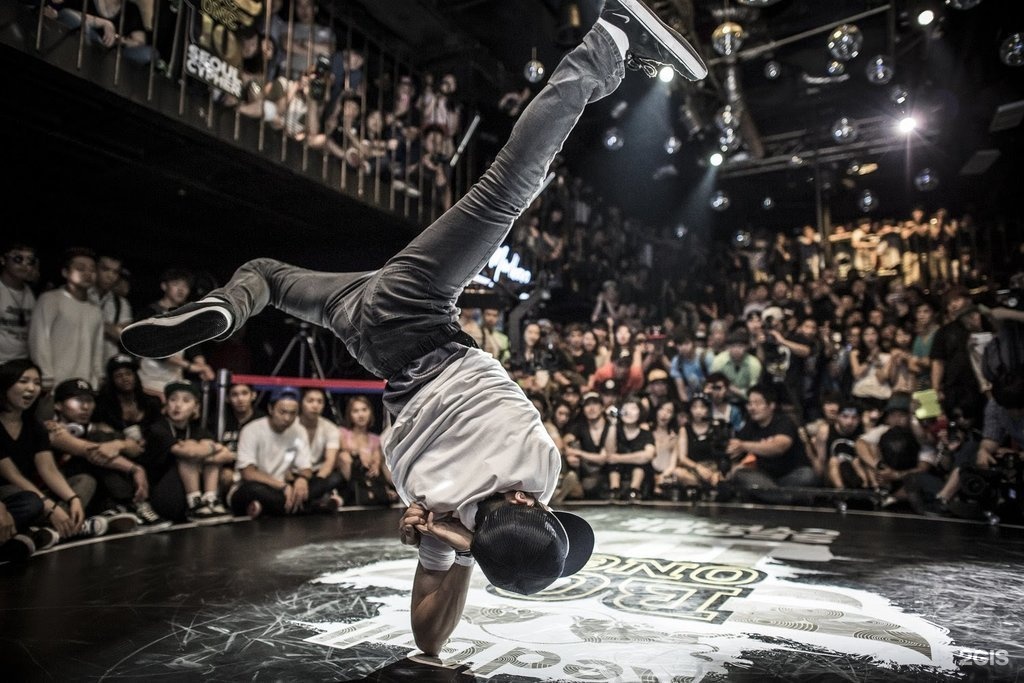How to start your own dance crew
14 tips from Abhishek Das
FAMOUS Family is a conglomerate of four dance crews which are well-known across India.
It started with the formation of Famous crew by Abhishek Das in 2013. Over his travels around the country, he acquired new members who had the same vision for dance as he did.
Over time he found that he was evolving as a person and a dancer. While he still shared similar ideologies with new dancers he met, the process to reach the end goal seemed to be different. And so he started the crews Fauj, Force and Future, to have newer members with similar thought processes that were still part of the same family.
So today, FAMOUS Family’s four dance crews are Famous, Fauj, Force and Future, with about 30 dancers from across the country who are part of the family.
Here Abhishek speaks about how he successfully put together these crews and tips for someone looking to start their own street dance crew.
FAMOUS Family at Red Bull Dance Your Style 2021 India Finals
© Vaqaas Mansuri
01
Find crew members with a similar mind-set
Abhishek says the most important thing for crew members is to follow the same mind-set or thinking patterns when it comes to dance.
“I have Supahit (Hitendra Bhandari) in Famous and his student Lockstar in Fauj. So although Lockstar learnt locking from Supahit, he started locking at a very different time and has different influences. So Supahit has a classic style of locking and Lockstar is very experimental. And that’s why we have them in different crews because they have different mind-sets and approaches to dance,” says Abhishek.
02
Identify a common theme/genre/style for your crew
What ties each dance crew together, and all of FAMOUS Family together in fact, is a uniform yet unique style of dance.
“When we travelled and met musicians, painters, poets, and people from different walks of art, we realized our country is so rich in culture. We decided that no matter what dance style we do, we will never forget our roots. So I would say ‘Indian-ness’ is our style. Even in the song mixes and costumes we choose, you will see that Indian-ness. I would describe our style as a global food dish with Indian spices.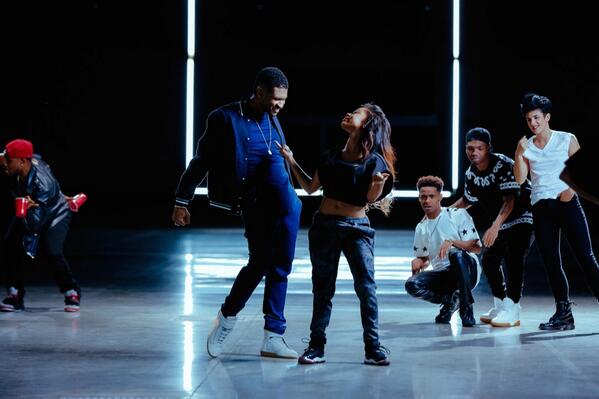 That’s what makes us stand out from everybody else,” says Abhishek.
That’s what makes us stand out from everybody else,” says Abhishek.
03
Allow individual dance styles to shine
While having a common dance style for the crew, it is important for the dancers to retain their individuality in their dance styles.
“Supahit does locking, Killachok does Krump, Tee J does waacking [and they are all in Famous crew]. In Fauj we have two hip-hop dancers and a female Krump artist, Shristhi. People had this weird mindset that girls should do sexier dance styles and guys should do aggressive ones. It was a stereotypical mind-set but we were able to change that thinking with people following what they want to,” says Abhishek.
FAMOUS Family at Red Bull Dance Your Style 2021 India Finals
© Vaqaas Mansuri
04
Members of your crew should be versatile
It helps if dancers in your crew can adapt to multiple dance styles; it makes it easier to achieve a collective crew style.
“We have someone who dances hip-hop and house.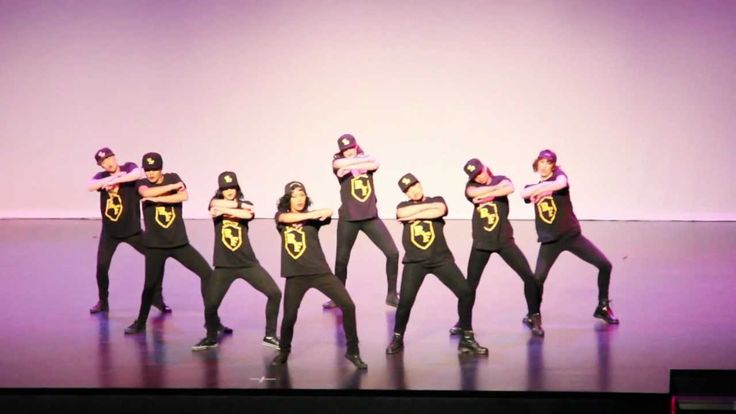 Another person is a breaker and krumper. Someone else does waacking and dancehall. So most people in our crew do two or more styles. We also have two people who do up to six styles,” says Abhishek.
Another person is a breaker and krumper. Someone else does waacking and dancehall. So most people in our crew do two or more styles. We also have two people who do up to six styles,” says Abhishek.
05
It’s not necessary to own a dance studio to be a crew
The studio doesn’t make the crew. So dance wherever you can to make it work.
“We don’t have a studio space because we keep travelling. Owning a studio is no joke because you have to take care of it. Maybe in a few years we will have a studio space we call home. For now, we rent a studio whenever we have a project or practice,” says Abhishek.
06
It helps to have a go-to space for the crew
Even if you don’t have a studio, having a common place that the whole crew feels comfortable is very important.
“Supahit’s terrace is our chilling spot. Everything happens there. The first performance we did on India’s Got Talent was also prepared on that small terrace. So that terrace is very special for us.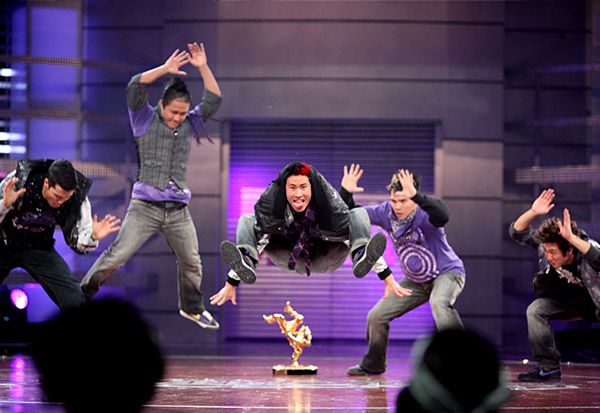 It’s pretty much the FAMOUS Family headquarters,” says Abhishek.
It’s pretty much the FAMOUS Family headquarters,” says Abhishek.
07
Practice as often as needed
The members of Famous crew have been dancing together for many years and know each other’s styles, so they don’t practice as often. But the newer crews stick to weekly practice routines.
“Famous crew isn’t always meeting up and practicing. We meet more often when there are projects. But Force and Future are the youngest crews; they practice thrice a week,” says Abhishek.
FAMOUS Family at Red Bull Dance Your Style 2021 India Finals
© Vaqaas Mansuri
08
Engage in activities together aside from just dance practice
Bonding activities aside from dancing practice and performance help the crew become tighter and understand each other better.
“We go to clubs to dance; it helps us stay connected to the freestyle aspect of dance. I have a PlayStation 4, so everyone comes to my house to play games. We also bond over percussion nights where we jam with drums and guitars, and we talk about music,” says Abhishek.
09
Encourage smaller bonds within the crew
It is possible that some crew members will form strong bonds than others. It can be helpful in the crew.
“Tanuj is part of Fauj and is from Kerala. I’d met him at a camp in Delhi and told him to come to Mumbai if he wanted to join our crew. And he surprised me by coming to Mumbai. Here he met our crew mate Prithvi who is also Mallu. So they bonded over similar heritage and that helped Tanuj adjust to life in Mumbai and being part of the family,” says Abhishek.
10
Choreography can be a one-person or whole-crew operation
Abhishek usually heads choreography for the crews but it is more a function of the final say on what stays and goes after everyone gives their inputs.
“When we come together for choreography, everyone brings something different to the table. I may be the final call on what goes ahead, but it’s a collective brainstorm and expertise comes form everyone. So if we have a Krumping section for just 15 seconds, the Krumpers in our crew will tell us the moves because they are the experts at what they do,” says Abhishek.
11
Adjust your style for each event/battle/stage/audience
FAMOUS Family choreographs and designs for each performance, video, event, battle, stage, and audience.
“We knew that Red Bull Dance Your Style is more underground, freestyle and street-based. So we didn’t want to create something extremely artistic. We knew Red Bull Dance Your Style is a battle-based event, so in our choreography, we added a chunk of cypher and battle. So our performance depends on the kind of audience and type of event,” says Abhishek.
FAMOUS Family at Red Bull Dance Your Style 2021 India Finals
© Ali Bharmal | Red Bull Content Pool
12
Pick songs according to your overall crew style
The music choices for FAMOUS Family are very strongly dependent on their ‘Indian-ness’ style of the crew.
“We tend to select international songs that we can easily mix an Indian song into. We’re always looking for songs where we can maybe put some tabla recordings in a rap song or a shehnai in house music; you know what I mean? We try to add that Indian-ness to international banger tracks to make it like our style,” says Abhishek.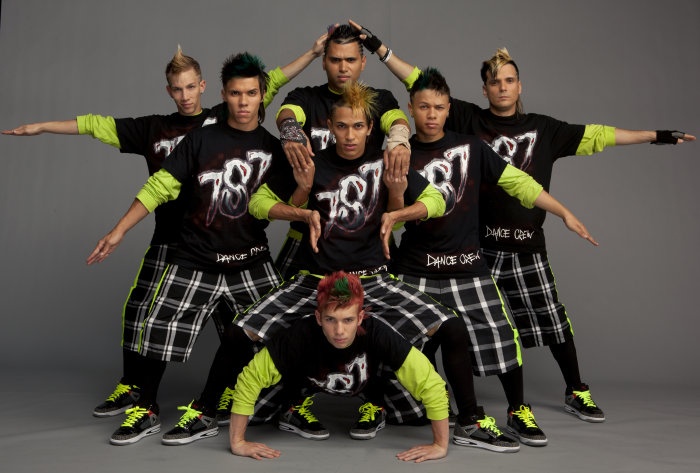
13
Put work into your costumes because they will be noticed
TeeJ (Tejasvi Patil) takes the lead in designing costumes for Famous crew.
“For Famous, I’d say our costume identity is ‘Internationally Indian’. There's always a blend, just like our dance style and our music choice. Like the vibe is Indian but the costume is urban. We like to keep that Indian-ness in our costumes also. So we might wear jumpsuits for international style ut malas around our necks to keep it Indian,” says TeeJ.
14
Work props into your routine if possible
Most street dancers avoid props, and Famous crew avoided it as well initially.
“When we started doing music videos, and especially after doing TV shows like Dance Plus, we grew out of the mentality that dance should just be us and the floor. We started thinking about where we could add different elements and props to our performance. So we’ve opened up as artists and if we feel props will help our performance, we use them,” says Abhishek.
Tips For Being On A Dance Team
You made it! Now that you're on your dream dance team, let's talk about tips for being on a dance team. Here are 12 things to keep in mind throughout the season!
1. Ask for critiques after you cast
Talking about growing is easy, but actually growing requires tons of fear-facing and weakness-addressing. A first step you can take is asking for constructive criticism. You need to understand what you need to work on in order to start working on it! So, ask the choreographer how you could improve your performance. It's not so much about wanting to get blocked front and center, but about continually improving through and for your team.
2. Pay attention!
Being on a dance team doesn't mean your work is done. You must always think of yourself as a student! A good student, at that.If a choreographer asks if there are any questions, ask, be present, and participate. This doesn't just show the choreographer that you are serious about mastering their style, but it's also an important habit to build, in general. You practice giving your full attention to someone else's style and way of teaching.
You practice giving your full attention to someone else's style and way of teaching.
3. Bond with the team whenever you can.
This is the best (and most fun) part of being on a dance team!Get dinner with your teammates, go to their parties, get to know them during downtime at practice.These are the people you spend hours on end in a studio/parking lot/random nooks on campus with.Building chemistry is personally fulfilling, and also helps create chemistry for when you perform!
4. Practice on the side
Get that piece or transition in your system without having to be told to practice.Make it your own mission, not the directors' job, to get yourself comfortable with your track in a set.And, once your teammates notice how hard you're working, they too will be motivated to push.
5. Balance having fun / putting in work
Practices are a great time to socialize (especially since it's the most convenient time to hang out with everyone at once).But ultimately, you and your teammates are there to achieve a goal. Talking on the sides is fine, but be sure you're not disrupting the actual, you know, rehearsal.
Talking on the sides is fine, but be sure you're not disrupting the actual, you know, rehearsal.
6. Cheer for your teammates
Support your teammates as they're performing a piece in groups, doing run-throughs of a set, showcasing for choreo day...A little moral support goes a long way when someone has had a rough week, a rough practice, or are simply exhausted during practice!
7. Take class outside of practices
Stretch your boundaries outside of regular practices.It's so difficult to muster up the energy to do so sometimes.However, taking extra classes will not only improve your own dance ability, but will also push your teammates to continuously work hard alongside you.And that's just a win-win situation for all.
8. Be nice to newbies on the team :)
As you transition from being a 'newbie' to an 'oldie', it's easy to forget the discomfort of being new to a team.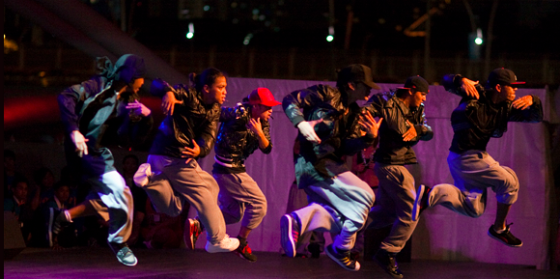 The awkwardness of new friendships, getting used to new choreo...Being a newbie is already nerve-wracking enough without the added fear of judgment from oldies (see #13).Don't be that person. Remember how it felt being on a dance team for the first time, and welcome them with open arms!
The awkwardness of new friendships, getting used to new choreo...Being a newbie is already nerve-wracking enough without the added fear of judgment from oldies (see #13).Don't be that person. Remember how it felt being on a dance team for the first time, and welcome them with open arms!
9. Be welcoming to alumni
Sadly, but often, alumni of teams feel disconnected to the current team.The alumni/current team relationship should not be one of 'out of sight, out of mind'.They have the same roots and have insightful things to offer through their past experiences.So, network and get to know your alumni; they have valuable advice for you!
10. Give appreciation to your directors/captains
It's not easy to manage a whole group of dancers.Leaders on your team play the role of choreographer, event planner, therapist, carpool driver...Just as you are trying your best to continuously improve as a dancer on the team, they are trying their best to continuously improve as leaders. Take the time to give them thanks as your wrap up rehearsals, or shoot them a text to let them know they're doing great!
11. Go to dance competitions with an
open heartEven though the nature of competitions are to determine placings, it's important not to let the spirit of competition supersede feelings of community and oneness.We've all worked equally as hard prior to competition day, so respect and acknowledge all the teams and dancers you see.
12. Most importantly, be open-minded
Be receptive to new choreography (because every team has a style, a way of execution that you may not be used to), be receptive to others, and be receptive to leadership.While being on a team and receiving direction from your captains and directors may seem like a passive relationship, there is far more depth to being on a team than going through the motions of learning and performing choreo with 40 other people.One single person can make or break a team.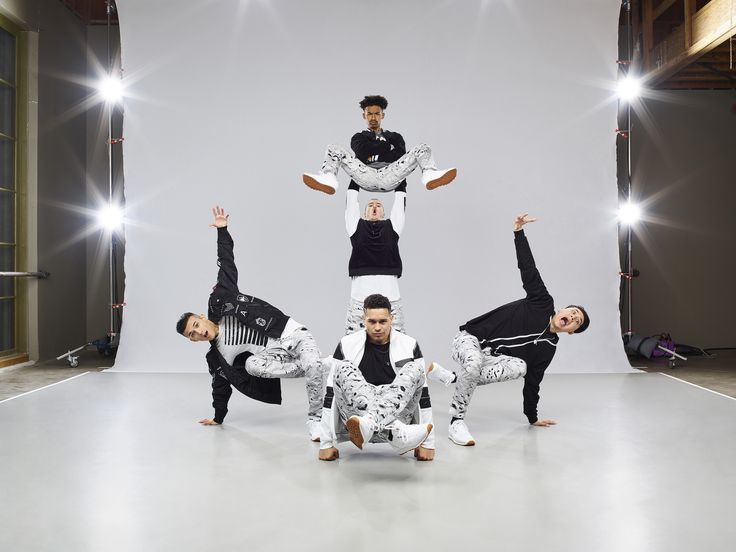 So use these 12 practices to affect your team positively and evolve team culture too!
So use these 12 practices to affect your team positively and evolve team culture too!
Got any tips for being on a dance team? Share them with us below!
How to Create a Dance Team - Dance Instruction
Creating a dance team requires planning and careful execution. With a little organization and a lot of hard work, you can create a new group that has the potential to be very successful.
Step One: Understand Your Purpose
Before doing anything else, it is important to understand the purpose of creating a dance team. To understand this, ask yourself a few key questions.
- Why am I interested in starting a dance team?
- Is there a particular population I want to serve?
- What unique gifts and talents will my team bring to the community?
- How can I see this in real time?
- Photos of ballet dancers
- Interesting facts about dancing
- Dance studio equipment
There are no correct answers to these questions.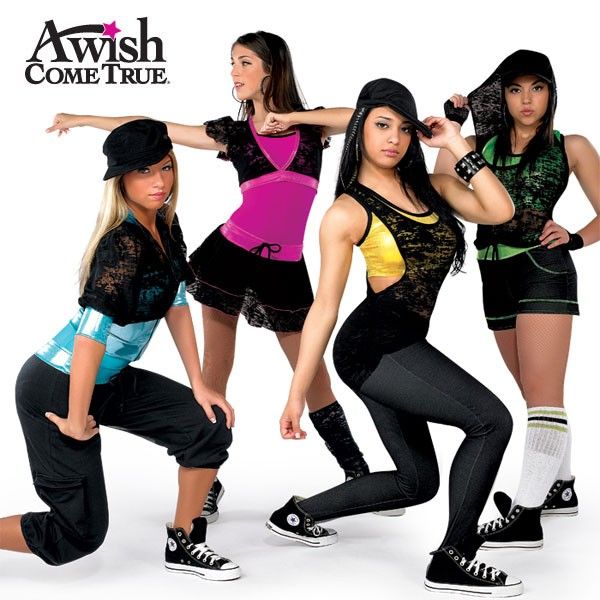 However, what you write will give you clarity in the future. Examples of team goals can be found in the mission statements of the Kolleens Dance Group, Bloomington, Minnesota, or San Francisco, California Dance Group.
However, what you write will give you clarity in the future. Examples of team goals can be found in the mission statements of the Kolleens Dance Group, Bloomington, Minnesota, or San Francisco, California Dance Group.
Step Two: Measure Interest
To build a successful team, the community must have a vested interest in supporting its creation and growth. This includes a number of parties.
- Dancers
- Potential clients
- Potential sponsors
- Possible team management
Where to watch
Post some local tentacles on online bulletin boards, dancewear shops, coffee shops, flyers, posted in and other places that those who have experience and profession related to dance may stumble upon. Make sure the announcements clearly state your goals and vision for the team. This will help you find people you can contact later for dancers and gigs. Engage with friends, family, and colleagues to see who might be willing to help themselves in some way, as well as those who might recommend themselves in their circles. If there is significant interest, the next steps will be much easier.
This will help you find people you can contact later for dancers and gigs. Engage with friends, family, and colleagues to see who might be willing to help themselves in some way, as well as those who might recommend themselves in their circles. If there is significant interest, the next steps will be much easier.
how much is my collection of Barbie dolls
Step Three: Choose Your Offers
There are many options for managing your dance team.
- Participate in dance competitions
- Recruit
- Volunteer at local events
- Host solo concerts
The offers you choose depend on your goals and the interests of the community.
Step four: think about costs and benefits
When selecting proposals, be sure to indicate how you will earn funds to pay for practical costs that may arise. You will need to create a budget that includes the following.
- Rehearsal room rental - Rates typically range from $20 to $50 per hour if you pay per session, with discounts for those who pay the entire month in advance.
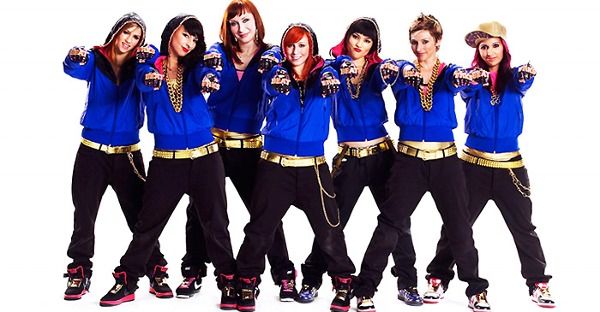
- Team uniform and suits. Clothing prices range from $100 to $600 depending on the quality and style you are looking for. What you choose for your team will greatly influence your proposals. For example, evening wear will be different from operational wear.
- Dancer Salary (if applicable) - Wages range from a minimum to $60 an hour for smaller events.
- Building Your Website - From buying a domain name to hosting services, you'll pay between $20 and $30 per month. Hiring someone to develop the page will cost extra, but your team may look more professional. However, there are plenty of tools to create your own if you want to save some money.
The more you can determine now, the more information you will have to build your squad. You also need to create a fundraising plan to determine how you will cover your budget.
Step Five: Build a Leadership Team
As the old saying goes, there is no "I" in a team. While you can probably build a dance team yourself, it's strategic and wise to build a team of people who can play leadership roles.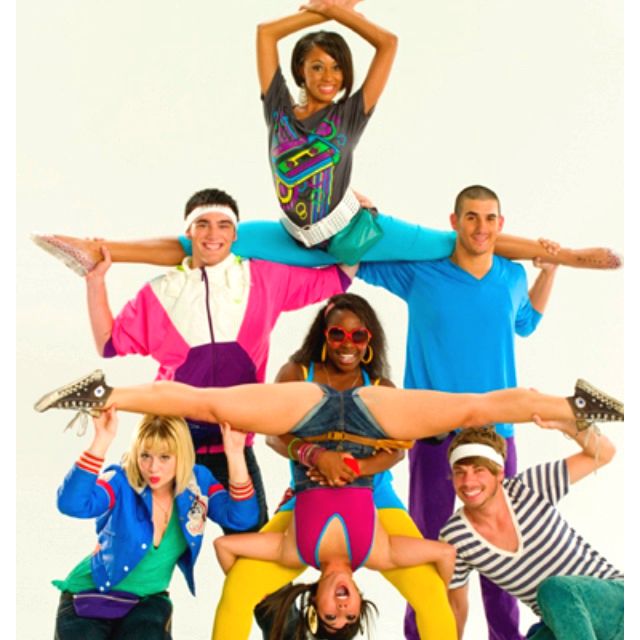
- Director - team leader
- Administrative assistant - takes notes during meetings with administrators, directs customer questions through the appropriate channels, is responsible for general customer service and accounting
- Event organizer - responsible for finding venues, suppliers and organizing events.
- Head of Marketing - to manage advertising and sponsorships
- Digital Media Coordinator - to manage the website, content creation and social media.
Paid or volunteer?
If you plan to make a significant income from your dance team offerings, these roles should be paid in accordance with industry standards as listed on sites such as glassdoor.com. If the team is for community service or will only pay through the competition, find people who are willing to volunteer their time. You can use the same channels listed above to fill these roles. Also, post an ad on Craigslist. Be sure to meet in person or schedule a call to get an idea of the applicant's personality and experience. You'll want to find people who love what you're trying to achieve and are willing to help you build your vision.
You'll want to find people who love what you're trying to achieve and are willing to help you build your vision.
Step Six: Hire Dancers
When hiring dancers, know who you are targeting. They can range from people who love to dance in their free time to those who dance professionally full time. Choose one or two dates for open auditions. Place an ad to recruit dancers on a talent or job listing website or in your local newspaper. Include clear listening and waiting rules in the call.
- Are you looking for people of a certain age or gender?
- Do you want them to prepare their own solo dance program to try out, or are you going to teach them how to dance in a particular style?
- Is there a dress code?
- Do you have a fixed rehearsal time that they need to fit into their schedule if accepted?
- Will the dancers receive money during performances and rehearsals or will they volunteer their time?
The more the dancers know in advance, the closer the potential talent will match the qualities and skills you need. You will also have the opportunity to be more selective about who you accept.
You will also have the opportunity to be more selective about who you accept.
Step Seven: Rent a rehearsal space
Many of the larger dance studios rent out dance spaces to smaller groups for an hourly rate. High school gymnasiums, recreation centers and even warehouses are other options. Pick a location that fits your team's needs and budget. When you have a spot, schedule a time for your team to get together two or three times a week and start dancing!
strange things to write to friends
Rehearse, perform, compete
Building a dance team is hard work, but once the foundation, leadership and dancers are in place, you begin the exciting task of empowering others to shine through the beauty of artistic movement. Sign up to compete or offer to speak at a local event to give your team something to work on until you get more opportunities.
Promoting a dance school: how a dance studio advertises and promotes services
Promotion of a dance school requires a non-standard approach in marketing due to the specifics of the business area.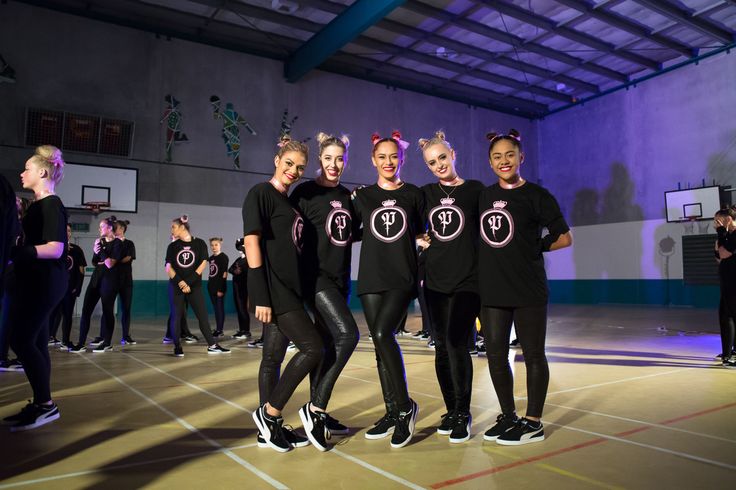 Dancing is fun, energy and drive, so advertising for a dance studio should evoke the same emotions. The times when new customers could be attracted by distributing leaflets near the subway are long gone. The modern audience wants everything at once. It is necessary to introduce her not only to the services, but also to the people who provide them. In this article, we will tell you what to do before starting to promote a dance studio and how to attract new customers using different types of advertising.
Dancing is fun, energy and drive, so advertising for a dance studio should evoke the same emotions. The times when new customers could be attracted by distributing leaflets near the subway are long gone. The modern audience wants everything at once. It is necessary to introduce her not only to the services, but also to the people who provide them. In this article, we will tell you what to do before starting to promote a dance studio and how to attract new customers using different types of advertising.
What to do before starting to promote a dance studio
1. How to determine the target audience
As in any other area of marketing, advertising and promotion of a dance school is based on the study of your target audience. At the same time, you need to understand that dance studios have direct and indirect competitors. Fitness clubs, wellness centers, martial arts schools also offer sports and development services. Therefore, the task of your marketing campaign is to convince people that dancing is the most suitable way of leisure.
Vogue dance with Verona Models
You can analyze the target audience using:
- • questionnaires or surveys;
- • interview;
- • focus groups;
- • thematic blogs and forums;
- • social networks.
The last method is good because with a minimum of money and time spent, you will find out the nature, habits and needs of your target audience. Also in social networks, you can see how and for what audience competitors are promoting their services.
2. How to create a client portrait
After analyzing the target audience, you need to break it into segments and create a portrait or avatar for each. Here is a list of parameters to consider:
- • gender;
- • age;
- • area of residence;
- • income level;
- • marital status;
- • interests;
- • problems and pains.
By “running” clients through this list, you will get their psychological portrait. It will help you work out the benefits consumers will receive from your service and identify triggers to influence them.
It will help you work out the benefits consumers will receive from your service and identify triggers to influence them.
3. How to create a sales funnel
Think about the customer's journey from the moment he sees the ad to the moment he buys the service. If you're promoting with free lessons, your sales funnel might look like this:
- • interest in dancing;
- • search for a suitable school;
- • contact with advertising;
- • sign up for a free lesson;
- • free lesson;
- • receiving an offer.
4. How to form an offer
The offer is formed based on the problems of the audience with the help of its main triggers. This is your promotional offer. “Learn to dance hip-hop in 3 months”, “Sign up for a free trial lesson”, “Become a member of a friendly community of dancers” - these are examples of offers for a dance studio.
5. How to create a landing page structure
The purpose of a landing page is to motivate the client and involve them in the sales funnel. It is important to remember that several advertising banners can be located on such a page at once. The structure of the landing page is based on the pains of customers. For example:
It is important to remember that several advertising banners can be located on such a page at once. The structure of the landing page is based on the pains of customers. For example:
Banner 1: main offer.
Banner 2: Headmaster's video message.
Banner 3: photos of students and teachers.
Banner 4: school facts or regalia.
Banner 5: a unique offer, such as discounted private lessons.
Banner 6: subscription offer.
Banner 7: School FAQ and contacts.
With this approach, advertising and promotion of the dance school is much more likely to resonate with potential customers. After all, you interact immediately with all segments of your target audience and work out objections.
How to promote a dance studio through contextual advertising
The advantage of contextual advertising is that it starts working immediately after launch. In a short time, you can collect a large number of applications and reimburse the costs of promotion. But it will take time to figure out the settings of the advertising account.
In a short time, you can collect a large number of applications and reimburse the costs of promotion. But it will take time to figure out the settings of the advertising account.
There are 3 contextual advertising mechanisms:
- Search algorithms. By analyzing the most popular queries for keywords, the system brings you to those who right now are driving into Google or Yandex “dance school record online”. When interacting with such a client, it is important to convince him to conclude a deal as soon as possible, otherwise he will go to competitors.
- GMS (display network) Google and YAN (Yandex advertising network). They show ads on affiliate sites for people who are interested in dancing. This method gives a good conversion for a relatively low price, however, the audience received from such an advertisement will be cold.
- Retargeting or remarketing. It allows you to make a special offer for those who came to your site, but for some reason did not leave a request.
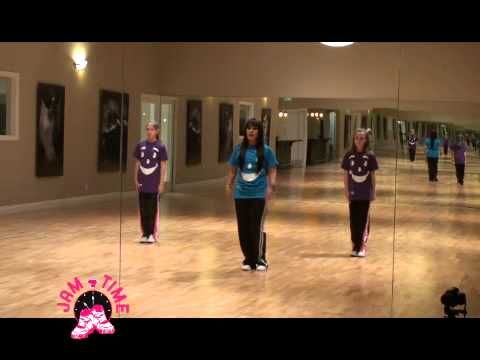
How to promote through targeted advertising
Targeted advertising is the most suitable option for small dance schools. An advertising account on Facebook and Instagram is much simpler than on Google and Yandex, and the cost of an application is lower. But contextual advertising has a higher conversion rate, as the target leads to a cold audience that your sales team needs to “finish”.
To make targeted advertising more successful, collect enough leads, upload the data to your Facebook ad account, and create a Lookalike Audience. She may be the most responsive.
How to promote a dance school with SEO
Before you start SEO promotion, carefully analyze your competitors. This will help you optimize your strategy and understand what services are in demand. For advertising to be effective, combine related keywords into groups (clusters) and prioritize queries. Then search algorithms will display the site in the TOP results due to natural traffic. You also need to make sure that there are no technical errors on your site.
You also need to make sure that there are no technical errors on your site.
Advertising with bloggers to promote the dance school
If you want to agree on a barter, use the following algorithm:
- • through blogger search services, find those who live in your city and who are interested in the services of a dance studio;
- • offer a blogger a free lesson in exchange for advertising;
- • agree on cooperation. Be sure to specify how many advertising posts the blogger will publish in his account.
If the blogger does not agree to barter, consider how necessary this type of promotion is.
Other Ways to Attract Customers
To get maximum exposure, try additional promotion methods:
1. Free Lessons
Dancing is one of the most spectacular art forms. If you organize a public performance of teachers and students of the school, the audience will see the result live and receive additional motivation.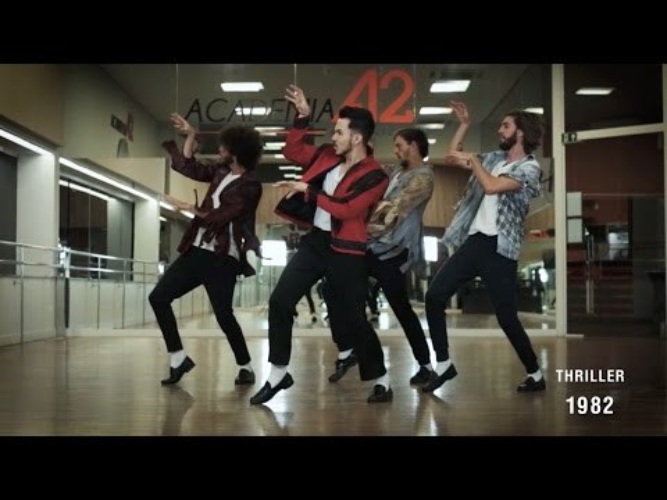
2. Promotions and discounts
To interest potential customers, arrange an open day. Workshops, consultations and discounts on subscriptions - showcase all the features of the school to interest visitors.
Modern dance school in Kyiv
3. Participation in competitions
First place in dance competitions is a sure way to increase customer confidence. To increase the conversion, try adding the phrase to the offer: “Do you want to learn dancing with the winners of the international competition?”.
4. Partnership programs with neighbors
The main advantage of such programs is a double budget for promotion, which allows you to organize a large-scale advertising campaign. Anyone can be a partner: a fitness club, a yoga studio or a children's music school. It is important to correctly present information and find common ground with the audience.
5. Offline advertising
Whether this method is needed depends only on the habits of your target audience.